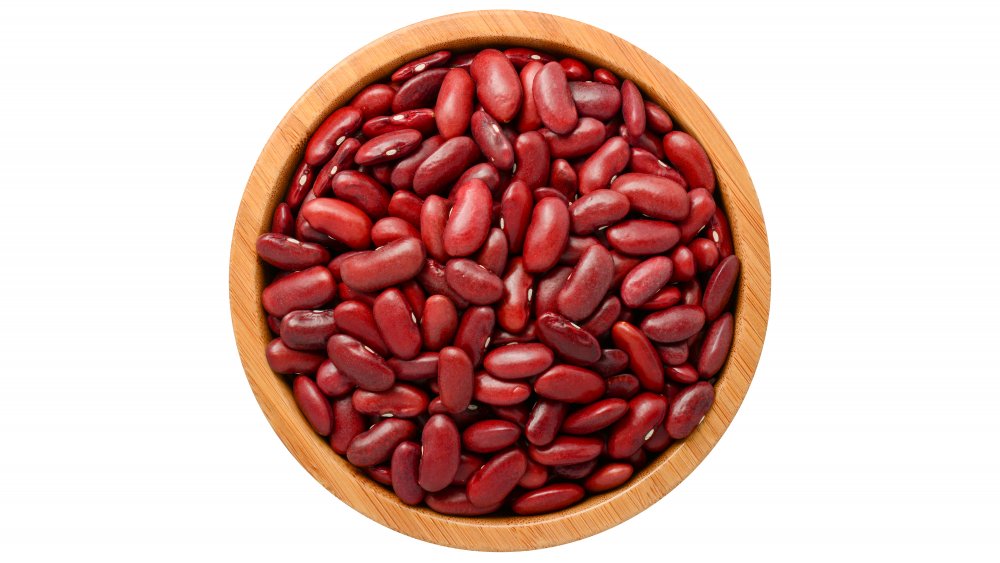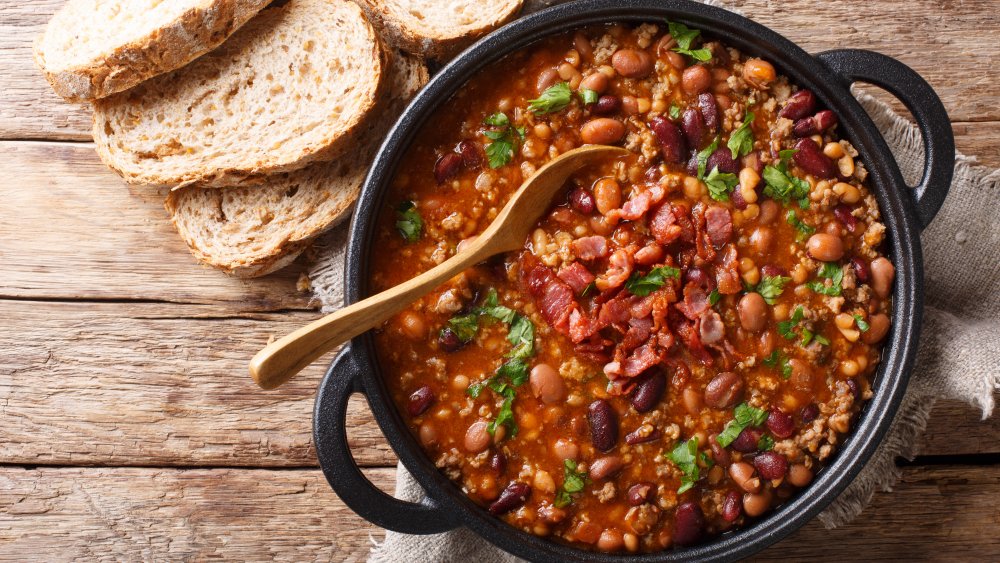The Real Reason You Shouldn't Cook Kidney Beans In A Slow Cooker
The kidney bean is quite a versatile legume. It is commonly called for in chilis, and it's a staple in Indian cuisine (via Cook with Anisa). Kidney beans are nutritious, and a great source of protein for vegetarians and vegans, boasting 8.7 grams of protein in a 100-gram serving (via Healthline). But, regardless of the type of recipe that calls for kidney beans, it's important to be careful about how you cook them.
Beans contain a naturally-occurring toxin called phytohemagglutinin, and kidney beans have a particularly high amount of the substance (via Dads Cook Dinner). And let's just say the toxin can cause severe gastrointestinal problems. The good news is that all you have to do is cook the kidney beans to a high enough temperature to deactivate the toxin. The bad news is that a slow cooker operates at too low of a level of heat to prevent getting sick.
How to deactivate the toxin in kidney beans
To take care of the toxin, the beans have to be cooked to a boiling temperature — 212 degrees Fahrenheit. Many slow cookers run at around 170 degrees, not quite warm enough to take care of the problematic component in the beans. The Food and Drug Administration recommends boiling the beans for 30 minutes to ensure that the toxin is destroyed, although this is on the cautious side, as ten minutes is probably ample time to kill the toxin (via Eating Well).
Not only does cooking the beans at a lower temperature not deactivate the toxin, it actually increases its potency. Cooking them at 170 degrees can increase the toxicity of the beans by five-fold (via Killing Thyme). Luckily, there's a bit of a workaround. Boiling your kidney beans first will ensure that the toxin has been taken care of, and then you're free to cook them in whatever slow cooker recipe you like.

